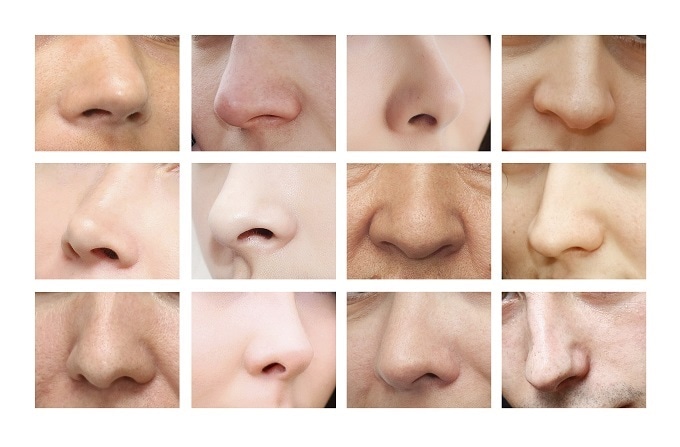Using sophisticated statistical methodologies, researchers of Penn State have demonstrated that the shape of the human nose is strongly correlated with temperature and absolute humidity. However, they conclude that, although the evolution of nose shape was strongly influenced by climate, there was probably a complicated cocktail of factors that determined the development of different nose shapes.

© Ivanova Natalia / Shutterstock.com
The human nose is a prominent facial feature that takes on a wide range of shapes. It also plays a number of roles important for our wellbeing. As well as being the primary means by which the air essential for life enters the body, it also ensures that the entering air is suitably warmed and moistened before it reaches the lungs. Furthermore, the nose is lined with hairs and mucus that trap unwanted microbes and dust carried in the air, preventing them from reaching the lungs and potentially causing disease.
Nose shape is inherited, but what are the forces that drive the development of particular nose shapes? We see big noses, small noses, narrow noses, turned up noses...but why is there such variation? Changes can occur randomly due to genetic drift, but the localization of particular nose shapes suggest that more specific factors are at work in this case.
Way back in the 1800's, the British anthropologist Arthur Thomson noted that long, thin noses tended to occur in colder, drier regions, whereas shorter, wider noses more often appeared in hotter, more humid areas. For the first time, this theory has been tested on living humans rather than on skulls.
Mark D Shriver, professor of anthropology at Penn State commented:
We are interested in recent human evolution and what explains the evident variation in things like skin color, hair color and the face itself. We focused on nose traits that differ across populations and looked at geographical variation with respect to temperature and humidity"
The researchers used 3D facial imaging to obtain a range of nose measurements, including the width of the nostrils, the distance between the nostrils, the height and length of the nose, and nose protrusion. By scientifically comparing the dimensions, it was found that the differences in the width of the nostrils and the base of the nose between populations were too great to be solely explained by random genetic drift.
Nasal traits were found to be strongly correlated with temperature and absolute humidity. In accordance with Thomson's nose rule, the Penn State researchers reported that wider noses are more common in warm-humid climates, while narrower noses are more common in cold-dry climates.
In cold and dry climates, narrower nostrils were an advantage and so people with such nose types probably fared better and had more offspring than people with wider nostrils. Over time, this lead to a gradual decrease in nose width among people living far away from the equator. A community may come to associate a particular nose type with health and prosperity and so a particular nose type would be considered more attractive, thus emphasizing the effect of natural selection.
Although local adaptation to climate may have had a role in the evolution of nose shape across human populations, it appears that this is a simplified explanation of a very complex evolutionary history, which possibly also involved other non-neutral forces such as sexual selection
Sources:
- Penn State press release 16 March 2017. Available at https://www.eurekalert.org/pub_releases/2017-03/ps-nfw030917.php
- Zaidi AA, et al. Investigating the case of human nose shape and climate adaptation. PLoS Genet 13(3): e1006616. doi:10.1371/journal.pgen.1006616. Available at http://journals.plos.org/plosgenetics/article?id=10.1371/journal.pgen.1006616